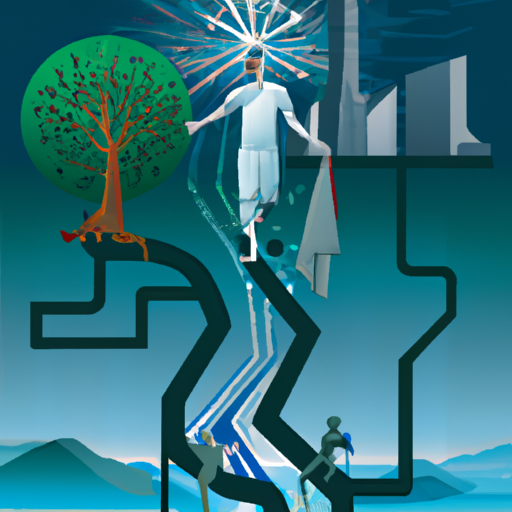When exploring the concept of religion, we can draw some fascinating parallels with the world of technology. As an ex-Jehovah’s Witness who once served in the computer department at the JW Headquarters, I have found this analogy to be particularly resonant.
Picture a religion as an app, with its core text and teachings as its underlying code. Just like in software development, our beliefs, practices, and communities form the building blocks of these “religious apps.” As time goes on, these apps may need updates, patches, or even a complete overhaul to better suit the evolving needs of their users.
The 1991 movie “Drop Dead Fred” and the classic “The NeverEnding Story” both present a powerful image of how our beliefs can shape our realities. In these stories, once people stop believing in something, it slowly disappears. This idea can serve as a poignant metaphor for the evolution of religious beliefs and practices.
While we don’t want our communities to vanish, we do need to recognize that change is an essential aspect of growth and development. Just as software engineers employ techniques like blue-green deployments to seamlessly transition between old and new systems, we too must find ways to adapt our religious systems without causing disruption or harm.
In this blog post, I’ll explore the religion as tech analogy, using my own experiences and insights from my time in the Jehovah’s Witnesses organization. By doing so, I hope to encourage reflection and conversation on how we can work towards a new system that is more inclusive, adaptable, and supportive of diverse needs and beliefs.
As the world becomes increasingly connected and diverse, it’s essential that our religious systems adapt accordingly. This means acknowledging and addressing harmful elements, such as discrimination or dogmatism, and embracing more inclusive values and practices.
One way we can work towards this change is by reimagining our core texts and beliefs. In the case of the Jehovah’s Witnesses, this could involve de-emphasizing the Bible as the central text and exploring alternative sources of wisdom, guidance, and inspiration. By doing so, we can create space for new perspectives and ideas that better reflect the diverse needs and experiences of our global community.
Another important aspect of this process is fostering open dialogue and collaboration. As we work towards this new system, it’s crucial to engage with a wide range of voices and perspectives, including those who have left the organization. By doing so, we can ensure that our new system is truly representative of the diverse needs and experiences of our community.
Finally, we must be prepared to let go of old beliefs and practices that no longer serve us. Just as software engineers must retire outdated systems to make way for innovation and growth, we too must be willing to relinquish the familiar in favor of the unknown.
As we embark on this journey towards a new system, it’s essential to approach the process with curiosity, openness, and a willingness to embrace change. By doing so, we can create a more inclusive, adaptable, and supportive religious landscape that reflects the diverse needs and experiences of our global community.
In the spirit of “Drop Dead Fred” and “The NeverEnding Story,” let’s work together to ensure that our beliefs and communities don’t disappear but rather evolve and grow to meet the needs of the ever-changing world around us.
Wishing you all the best on your journey,
Brandon Fiquett


One thought on “Embracing Change: The Religion as Tech Analogy and Our Journey Towards a New System”